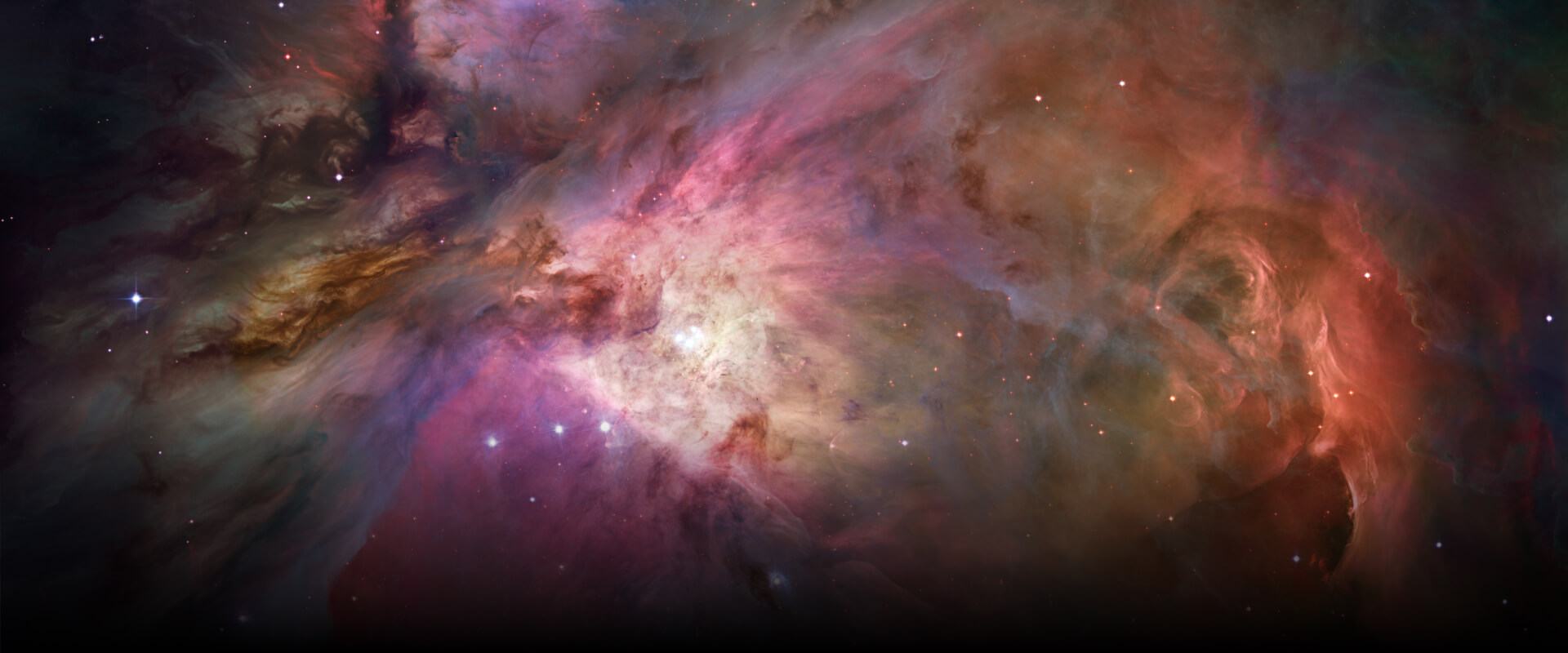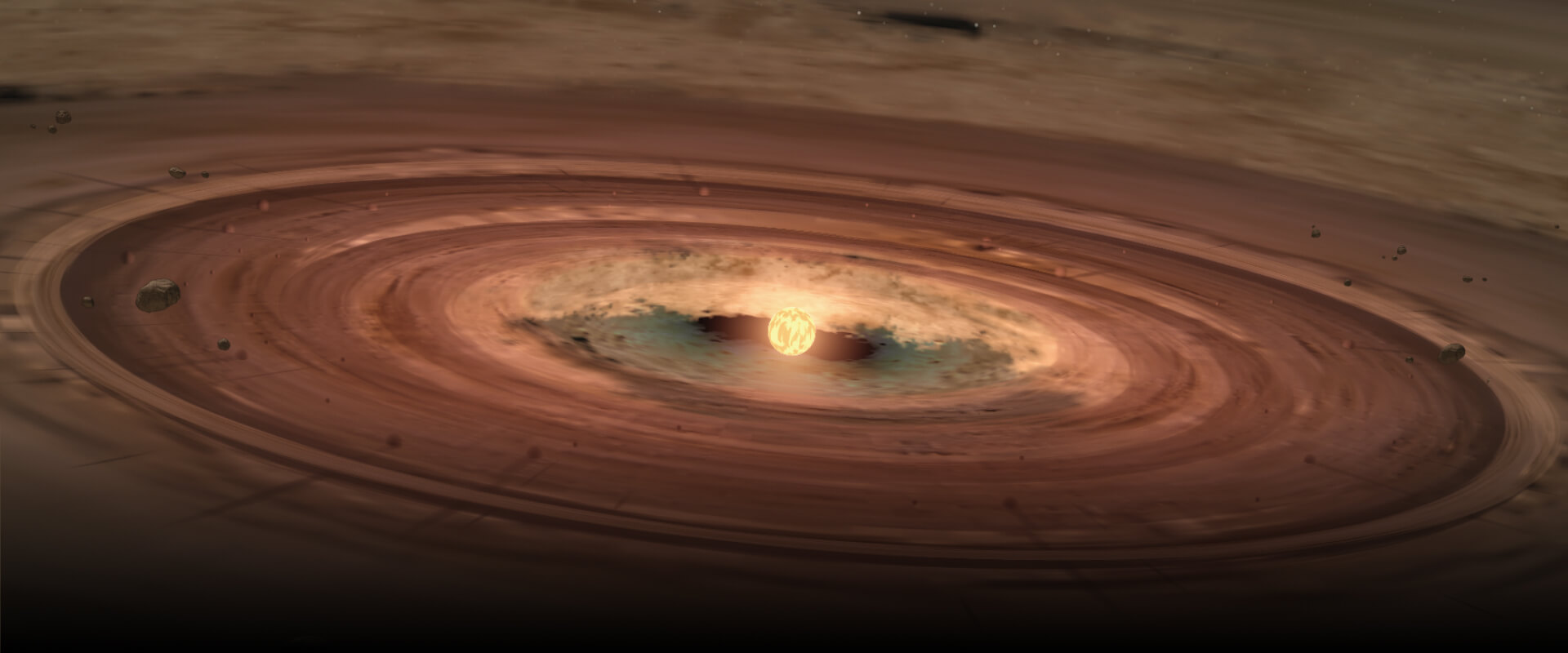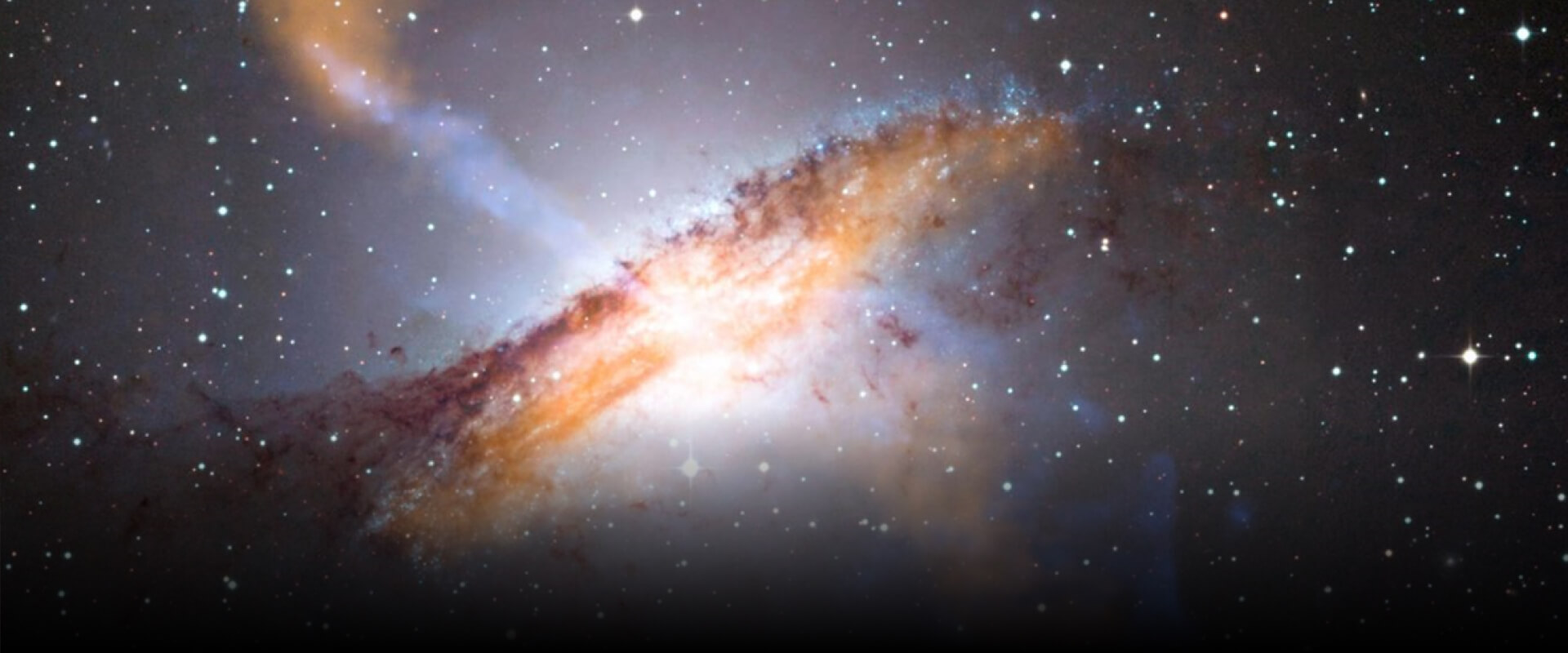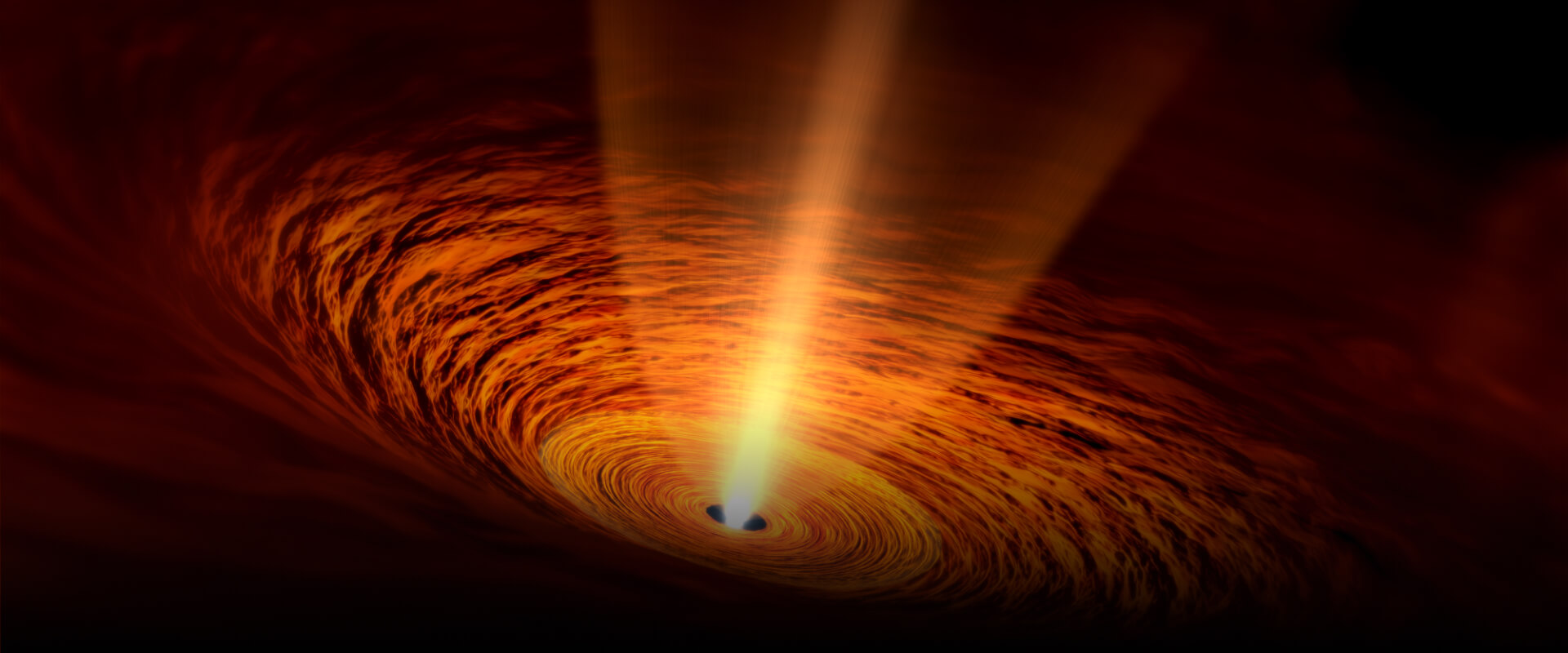Division of Science, NAOJ
Newly Assigned
Dr. Kimihiko Nakajima
- Project Assistant Professor in NAOJ [info] (2020/03/01-)
Dr. Masami Ouchi
- Professor in NAOJ [info] (2020/8/15-)
Moved
Dr, Tomohisa Kawashima [email]
- NAOJ Project Assistant Professor (-2020/03/31)
- ICRR Fellow (2020/04/01-)
Dr. Takayoshi Kusune
- NAOJ Project Researcher (-2020/03/31)
- Nagoya university Project Researcher (-2020/04/01)
- NAOJ fellow (2019/04/01-2020/03/16)
- Assistant Professor in Osaka University (2020/03/17-)
Mr. Yuta Ueda
- Research Supporter in NAOJ (2019/04/01-2019/11/15)
Dr. Hajime Sotani
- NAOJ fellow (-2019/06/31)
- Postdoctral Fellow in NAOJ (2019/07/01-2019/10/31)
- Research Scientist in Riken (2019/11/01-)
Retired
Dr. Haruo Yoshida [email]
- NAOJ Professor(-2020/03/31)
- NAOJ Assistant Professor (-2020/03/31)
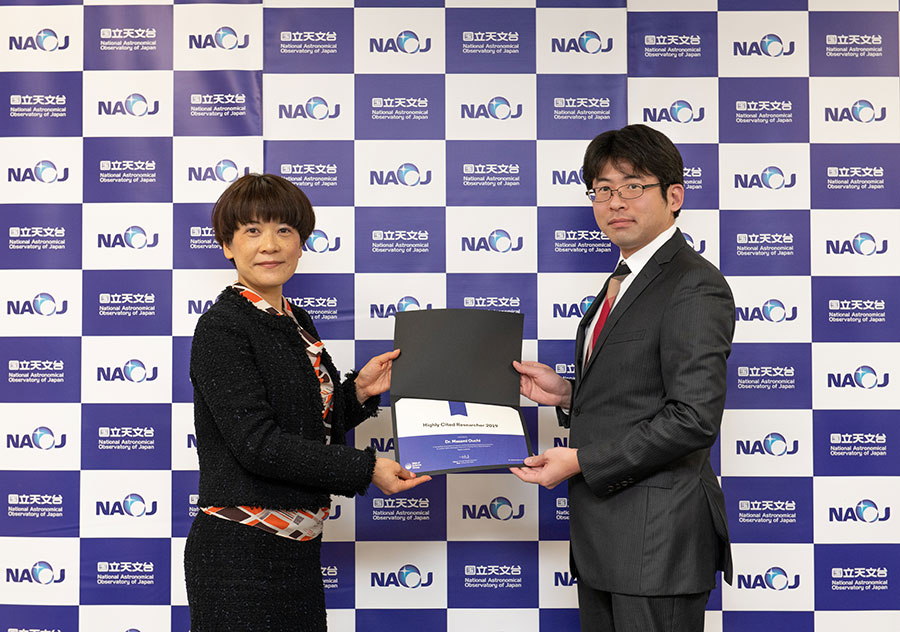
See the URL below for the details.
As announced in tennet:18163, professor positions are open. Please see below for the details.
NAOJ invites applications for a few full professor positions.
Full professor (a few positions)
Field: Astronomy or related fields
Please see the details below and use a new job application system with
care.
https://www.nao.ac.jp/en/contents/job-vacancy/job-20191128-science.pdf
This deadline is Feb. 28th, 2020, 5pm JST.
NAOJ
Masao Saito
Here we show a transfer from tennet:17827.
NAOJ invites applications for two project assistant professor positions
as follows. Please notice that the deadline of each position is
different. Please forward this announcement to the candidates and apply
for these positions.
1: Project assistant professor (Division of Science (Prof. Nomura’s group))(one position)
Deadline: October 18th, 2019, 5pm JST
Please see the details below.
https://www.nao.ac.jp/en/contents/job-vacancy/job-20190828-science-2.pdf
2: Project assistant professor (Division of Science (Prof. Ouchi’s group))(one position)
Deadline: November 1st, 2019, 5pm JST
Please see the details below.
https://www.nao.ac.jp/en/contents/job-vacancy/job-20190828-science.pdf
NAOJ Job Vacancy
https://www.nao.ac.jp/about-naoj/employment/job-vacancy.html
https://www.nao.ac.jp/en/about-naoj/employment/job-vacancy.html
NAOJ
Hideko Nomura
Masami Ouchi
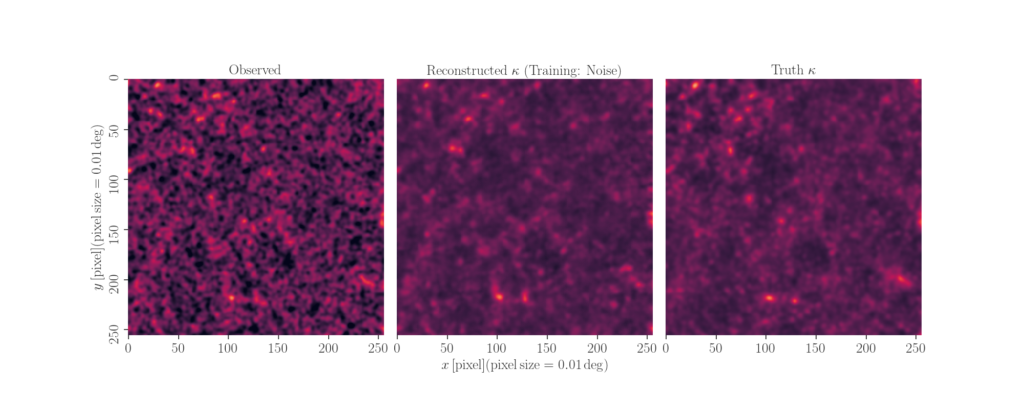
Gravitational lensing is a relativistic effect that causes characteristic distortion of the images of distant astrophysical sources. Although the induced distortion is tiny for individual sources, averaging over the shapes of many sources enables us to map the large-scale cosmic matter distribution. Wide-field galaxy surveys allow us to generate the so-called weak lensing maps, but actual observations suffer from noise due to the imperfect measurement of galaxy shape distortions and to the limited number density of the source galaxies.
Dr. Masato Shirasaki (Division of Science, National Astronomical Observatory of Japan), Prof. Naoki Yoshida (Univ.of Tokyo) and Prof. Shiro Ikeda (The Institute of Statistical Mathematics) explore a deep-learning approach to reduce the noise. They develop an image-to-image translation method with conditional adversarial networks (CANs), which learn an efficient mapping from an input noisy weak lensing map to the underlying noiseless field. They train the CANs using 30000 image pairs obtained from 1000 ray-tracing simulations of weak gravitational lensing. The figures show an example of image-to-image translation by the networks. The left panel shows an input noisy lensing map, while the right is for true (noiseless) counterpart. The medium represents the reconstructed map by their networks. In this figure, a brighter (darker) region corresponds to a higher (lower) matter density. In the paper, they investigate the robustness of the deep-learning method to de-noise the lensing map and propose to use the de-noised map for cosmological analyses.
2019/08/19
Reference:
Shirasaki, M., Yoshida, N., Ikeda, S. Physical Review D, 100, 043527 [ADS] [doi]
Contact:
Masato Shirasaki [reserchmap]
Here we show the partial copy of tennet:17781.
NAOJ invites applications from female researchers for associate professor and assistant professor positions. Please forward this announcement to the candidates and apply for these positions.
1: Associate professor (a few positions)
Please see the details below.
https://www.nao.ac.jp/en/contents/job-vacancy/job-20190816-associate.pdf
2: Assitant professor (a few positions)
Please see the details below.
https://www.nao.ac.jp/en/contents/job-vacancy/job-20190816-assistant.pdf
This deadline is November 1st, 2019, 5pm JST.
NAOJ Job Vacancie
https://www.nao.ac.jp/about-naoj/employment/job-vacancy.html
https://www.nao.ac.jp/en/about-naoj/employment/job-vacancy.html
NAOJ
Satoru Iguchi
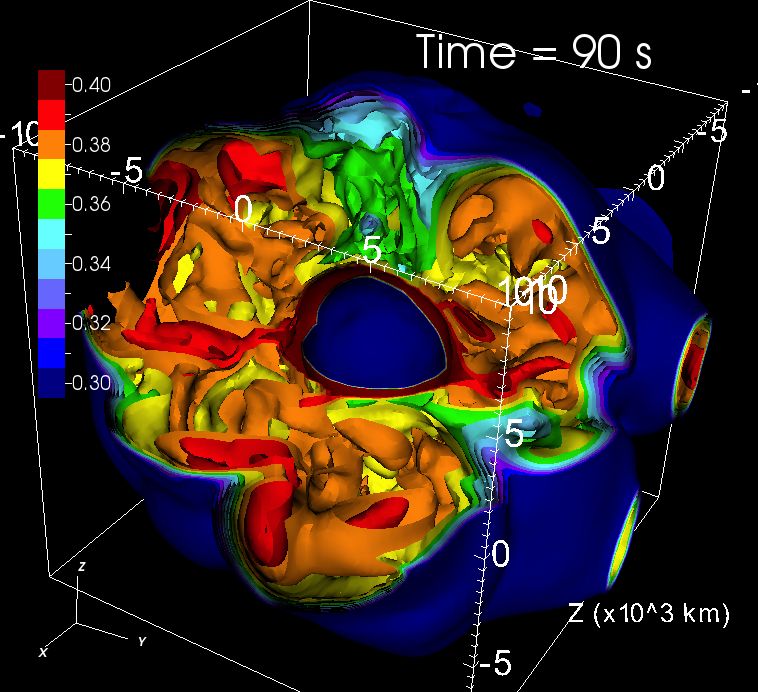
Dr. Takashi Yoshida (University of Tokyo), Dr. Tomoya Takiwaki (Division of Science) and their colleagues have been successful in a three dimensional simulation of O-shell burning phase just before the core-collapse of a massive star. A strong turbulence whose Mach number of 0.1 is found in the simulation. The figure depicts the mass fraction of Si. The turbulence makes anisotropic density distribution and that can promote a vigor explosion of core-collapse supernovae.
In this study, they first performed 100 of 1D simulations with changing stars’ initial masses and other parameters. After that they picked up 11 models and performed 2D simulations. They found preferable environment to make strong turbulence. The environment is O layer which contains a lot of Si that located at about 1000 km. The result of the 3D simulation is compared with that of 2D simulations. They also found that the energy spectrum of 3D simulation is different from that of 2D simulation.
2019/08/13
Reference:
Takashi Yoshida, Tomoya Takiwaki, Kei Kotake, Koh Takahashi, Ko Nakamura, and Hideyuki Umeda,The Astrophysical Journal, in press [ADS], [ApJ]
Contact:
Yoshida, Takashi [orcid]
Takiwaki, Tomoya [personal website]
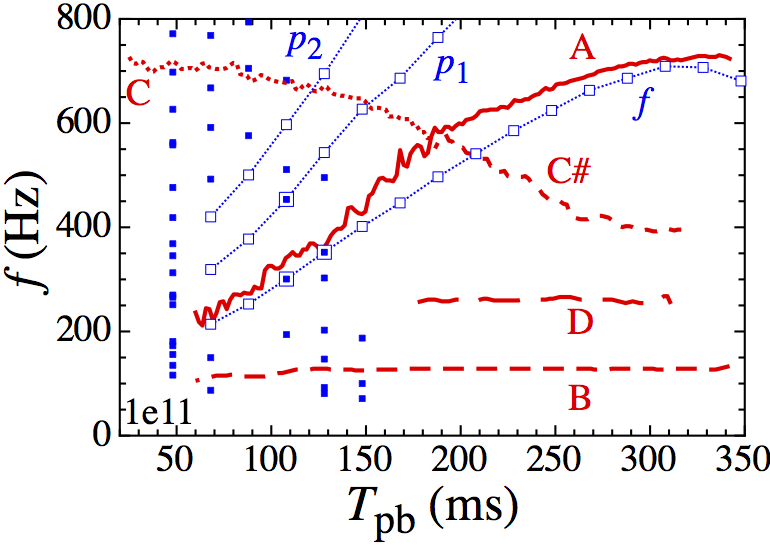
Core-collapse supernovae are target of multi-messenger astronomy. The neutrinos and gravitational waves are emitted at the explosion in addition to the photons. Detection of such signals is expected to provide essential clues to understand their explosion mechanism.
Dr. Hajime Sotani, Dr. Tomoya Takiwaki and their collaborators analysed the modes in the proto-neutron star using technique of asteroseismology. They found that one of the most important mode of gravitational wave could be interpreted as a f-mode activity of proto-neutron star. That mode is usually considered as a surface g-mode.
Though the frequency of that gravitational wave signal tells us the radius and mass of the proto-neutron star, the f-mode and surface g-mode predict different frequencies. To clarify the origin of the mode, we need more models and update of the analysis method.
2019/07/29
Reference:
Sotani, Hajime; Kuroda, Takami; Takiwaki, Tomoya; Kotake, Kei, Physical Review D, Volume 99, Issue 12, id.123024 [ADS], [PRD]
Contact:
Sotani, Hajime [orcid]
Takiwaki, Tomoya [personal website]
Call for application on NAOJ fellow 2020 has been started. The deadline is 6th September 2019. See this page for the details. NAOJ fellows in Division of Science are listed in this page (Japanese).
On 23rd Jun. 2019, Dr. Tomohisa Kawashima (CfCA) was on TV, Galileo X and explained the achievement of EHT.
